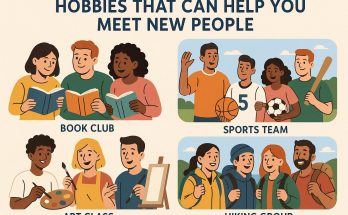Introduction
In recent years, the proliferation of technology has significantly impacted how people engage with and pursue their hobbies. From traditional activities such as gardening and photography to modern pursuits like gaming and coding, technology has reshaped the landscape of leisure and creativity. This article explores the various ways technology has transformed hobbies, providing both new opportunities and challenges for enthusiasts.
Enhanced Access to Resources
One of the fundamental changes brought about by technology is the unparalleled access to information and resources. Online platforms offer tutorials, forums, and virtual communities, allowing hobbyists to share their experiences and gain insights from others. For instance, aspiring musicians can find countless tutorial videos and sheet music online, while photography enthusiasts can learn advanced techniques through blogging sites and instructional content. This extensive access to resources has made self-paced learning more feasible, as individuals can tailor the knowledge they acquire to meet their specific interests and skill levels.
Additionally, technology has enabled the digitization of many physical resources. Libraries and resource centers, once limited to physical locations, now offer e-books, audiobooks, and digital archives. This transition to digital forms means that information is accessible anytime and anywhere, significantly benefiting hobbyists who seek to expand their knowledge continuously.
Virtual and Augmented Reality
The advent of virtual and augmented reality has opened new dimensions for hobbyists. Virtual reality (VR) headsets offer immersive experiences, allowing users to explore digital worlds or simulate real-life environments. For example, VR enables individuals to visit art galleries, attend virtual concerts, or even practice sports in detailed simulations. Similarly, augmented reality (AR) applications enhance real-world activities by overlaying digital images on the physical environment, enriching hobbies like gardening with interactive guides as seen in applications available on Google Play.
VR and AR technology not only provide entertainment but also serve educational and practical purposes. For instance, VR exercise programs have gained popularity, providing users an engaging way to stay fit while exploring fantastical environments. On the other hand, AR apps allow users to identify plants in their garden or see how different components might fit together in crafting projects, adding a layer of information that traditionally required extensive research or experience.
Online Communities and Social Engagement
Technology has fostered the growth of online communities where individuals with shared interests can connect, collaborate, and compete. Social media platforms and specialized forums enable hobbyists to form global networks, transcending geographical boundaries. Gaming, one of the most popular tech-driven hobbies, exemplifies this phenomenon. Players join online multiplayer games, engage in forums, and watch live streams, creating a vibrant and interactive community.
These platforms also serve as a venue for sharing achievements and gaining feedback, which can be highly motivating for hobbyists at all stages. Many online communities host events, contests, and live sessions, providing opportunities for participants to showcase their skills and creativity. This social engagement not only enhances enjoyment but also helps develop a sense of camaraderie and support among enthusiasts, encouraging more profound exploration and commitment to their interests.
Automation and Innovation
In some hobbies, automation has introduced efficiencies and enabled more innovation. For example, 3D printing technology allows artists and designers to quickly create prototypes and models that once took much longer to construct manually. Drones have revolutionized the hobby of aerial photography and videography, offering new perspectives and capabilities for capturing stunning imagery.
Automation tools are not limited to building and photography; they have broad applications in a variety of hobbies. Smart home technology enables hobbyists, such as gardeners, to automate watering schedules and environmental monitoring. Additionally, coding hobbyists can leverage automation to streamline tasks in app development, testing their code in real-time and integrating with online services for collaborative projects.
Challenges and Considerations
Despite the numerous benefits, the influence of technology on hobbies does not come without challenges. One concern is screen time, as many technology-based hobbies require prolonged use of digital devices, which can lead to health issues such as eye strain. Managing screen time has become a growing priority, with hobbyists encouraged to take regular breaks and practice eye exercises to mitigate potential negative effects.
Additionally, there is the challenge of maintaining balance between virtual interactions and real-world experiences. While online communities and digital projects can be engaging, they often lack the tangible satisfaction that can come from physical activities. This balance is crucial for ensuring a holistic engagement with hobbies that cater to both mental and physical well-being.
Moreover, the rapid pace of technological advancement can make it difficult for hobbyists to keep up with changes. New tools and platforms emerge frequently, potentially rendering previous knowledge obsolete. Therefore, staying current with the latest trends and updates can become as demanding as the hobby itself, demanding time, effort, and sometimes significant financial investment.
Conclusion
Ultimately, technology has vastly expanded the possibilities for hobbyists. Whether through enhancing traditional activities or creating entirely new ones, the impact is undeniable. As technology continues to evolve, it is essential for hobbyists to embrace these advances thoughtfully, maximizing benefits while acknowledging potential drawbacks. This includes managing time spent on digital hobbies, staying informed about the latest tools and trends, and finding a balance between online and offline experiences.
By doing so, hobbyists can unlock the full potential of technology to enrich their pursuits, foster personal growth, and connect with a broader community of enthusiasts worldwide. In accepting the challenges and opportunities brought by technological innovations, hobbyists are empowered to shape their experiences in ways that align with their individual goals and interests, paving the way for a more fulfilling and engaging exploration of their passions.





